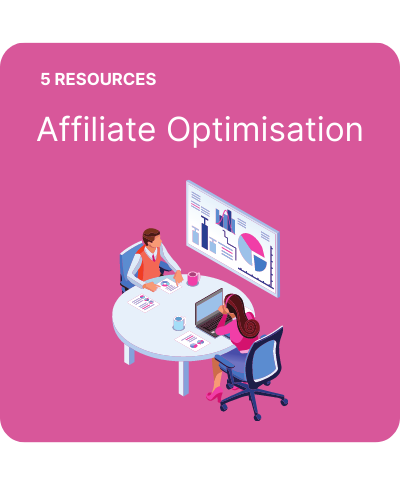What is affiliate marketing?
Affiliate marketing is the process by which affiliates will promote your company’s product or service using a unique URL called an affiliate link.
When a customer clicks through that affiliate link a cookie is dropped onto their browser. It remains there for on average 30 days if it isn’t removed. Should the customer purchase on your website in that 30-day cookie window, you will reward that affiliate with a cut of the sale. This cut of sales is referred to as the commission.
The more traffic they can send through their affiliate link, the greater chance there is of you making more sales and the affiliate earning more commission.
How does affiliate marketing work?
For affiliate marketing to work, affiliates need to be using their unique link collected from the program’s dashboard. Without this link, the sale can’t be tracked to the affiliate and therefore no commission can be paid.
An example link might look like this:
Unlike with other channels like paid search. You only incur a cost when a genuine sale on your site is made.
Here is an overview of the key players in an affiliate managed program.
Advertiser | Brand
There is no limitation to who can launch an affiliate program. You could be a solo entrepreneur selling online courses or a globally renowned eCommerce store. The process is the same for both.
Affiliate | Publisher
This army of affiliates is who you are going to equip with the right tools to promote your company. You might only choose to work with a handful of core publishers or open things up to hundreds, even thousands.
Network
This is the tracking platform you choose to host your affiliate program and stitch the customer journey together.
There are large affiliate networks that could have thousands of advertisers and publishers working together. But, alternatively, you could also opt for self-hosted tracking to keep costs down.
Customer
Without this element, no sales are generated and no commission paid out. The customer needs to be clicking through an affiliate link and purchasing for the whole process to work.
What are the affiliate payment models?
There is no one-size-fits-all payment model for all affiliate programs. How much you choose to pay your affiliates could be down to many different factors such as profit margins or competitive advantage.
As a brand, you might also like to mix different payment models. This can help maximise ROI, encourage customer acquisition and keep publishers more engaged.
Here are some of the most common payment models for affiliate programs.
Cost per sale (CPS) – Also known as cost per acquisition (CPA), it is the most commonly used payment model. The affiliate receives a percentage commission of the sales value.
Cost per lead (CPL) – Prevalent in service-led industries. You would pay the affiliate a reward for every lead. This lead could be a newsletter sign-up, booked test drive or free trial.
Cost per call – Based on a customer calling your helpline you can pay the affiliate for facilitating this. You might choose to pay a reward per call or base it on the call length.
Cost per view (CPV) – Sometimes known as CPM, any affiliate commission revolves around a cost per thousand metric. The affiliate receives a commission reward for every thousand views of an ad or video.
Why is affiliate marketing important?
All brands are looking to grow brand awareness, send targeted traffic to their site and make more sales. Affiliate marketing enables you to do all this and only pay for successful results. This is why it is so important.
But, that doesn’t mean it is easy to see immediate results.
Affiliate marketing’s success can often be linked back to relationships. Look at the channel as building business relationships with publishers based on common goals. That way you can encourage them to promote your brand more often and gain a competitive edge.
Although, with the right program structure and management, a strategy for the channel can be easier to execute. The result is the affiliate channel can become a valuable player in your online marketing mix (up to 20-30%) if managed correctly.
Common affiliate publishers
The affiliate space is made up of a diverse range of publishers. They are all looking to find the brands that engage best with their audiences and help them earn more commission.
To give you a better idea of the types of publishers you could work with, here are some of the most common affiliates.
Cashback – Pass their earned affiliate commission to the customer
Coupon – Promote discounts and offers to their savvy shopping audience
Content sites – Large media publications using affiliates to diversify revenue streams
Influencers / Bloggers – Earn commissions for the products they are wearing or talking about through their site or social channels
Loyalty – Turn the commission they earn into points for customers to collect
Paid search – Operate your search engine activity on a CPA instead of a CPC basis
Conversion Tools – Help brands convert more customers on their website using innovative tools
Learn More
10 Ways Brands Can Improve Affiliate Conversion Rates: Optimise the great traffic your affiliates are sending you with these helpful tips.
Affiliate Marketing for Small Businesses: Affiliate marketing can still be an effective online channel for small businesses. Find out how.
36 Ways To Recruit New Affiliates: Recruitment is the most time consuming (but important) element of affiliate management. I’ve put together a ton of ways to find and recruit new affiliates to your program.



